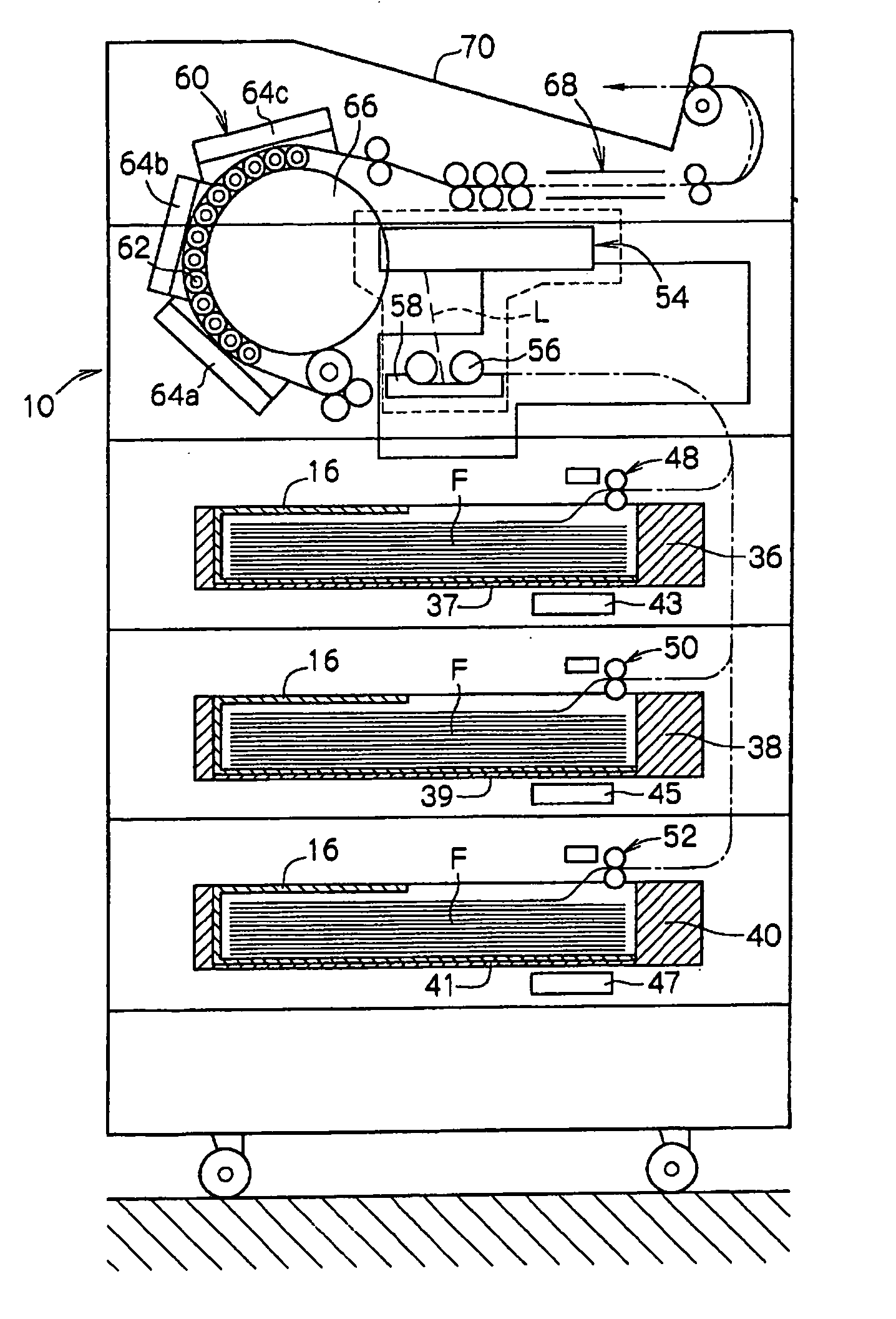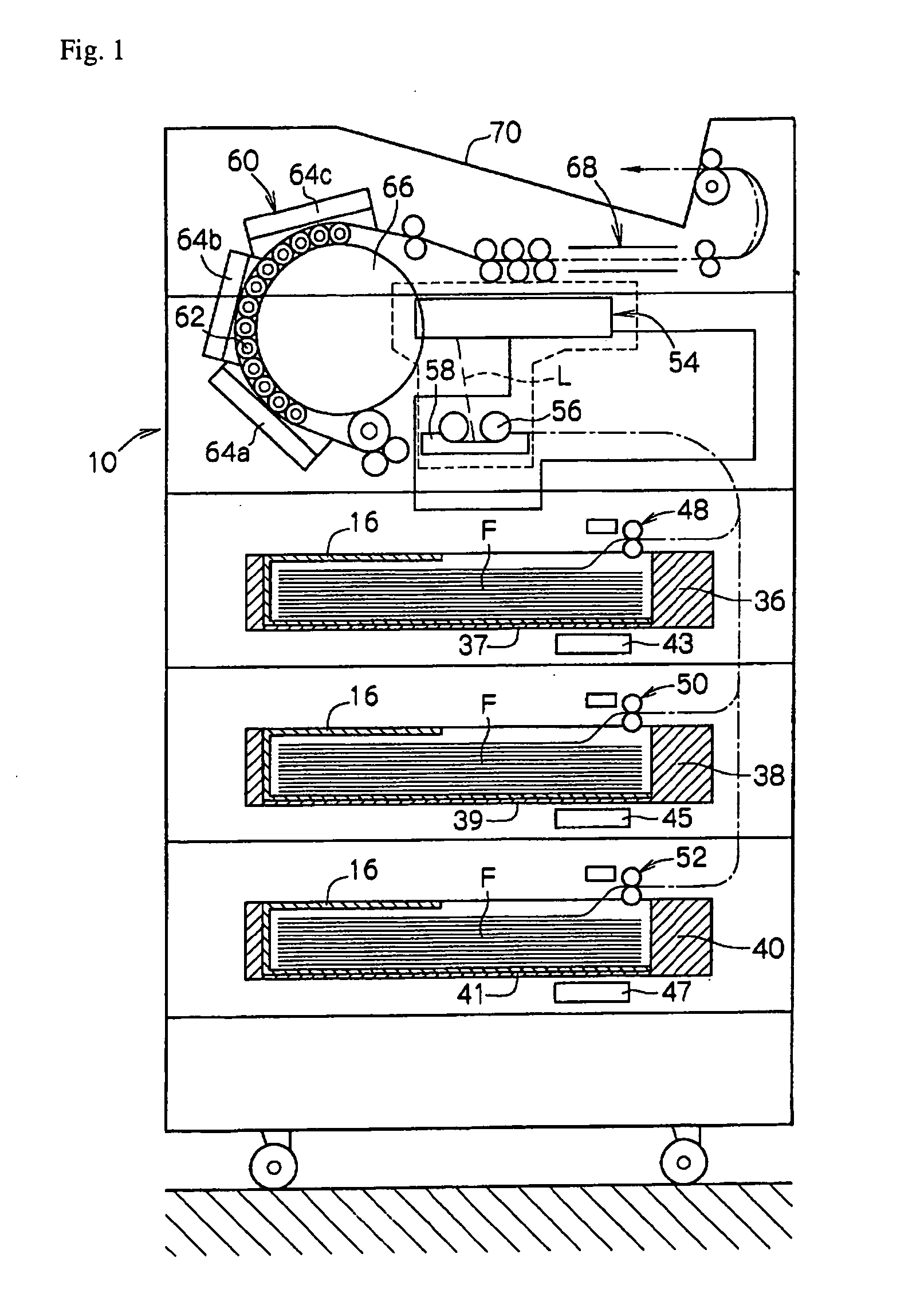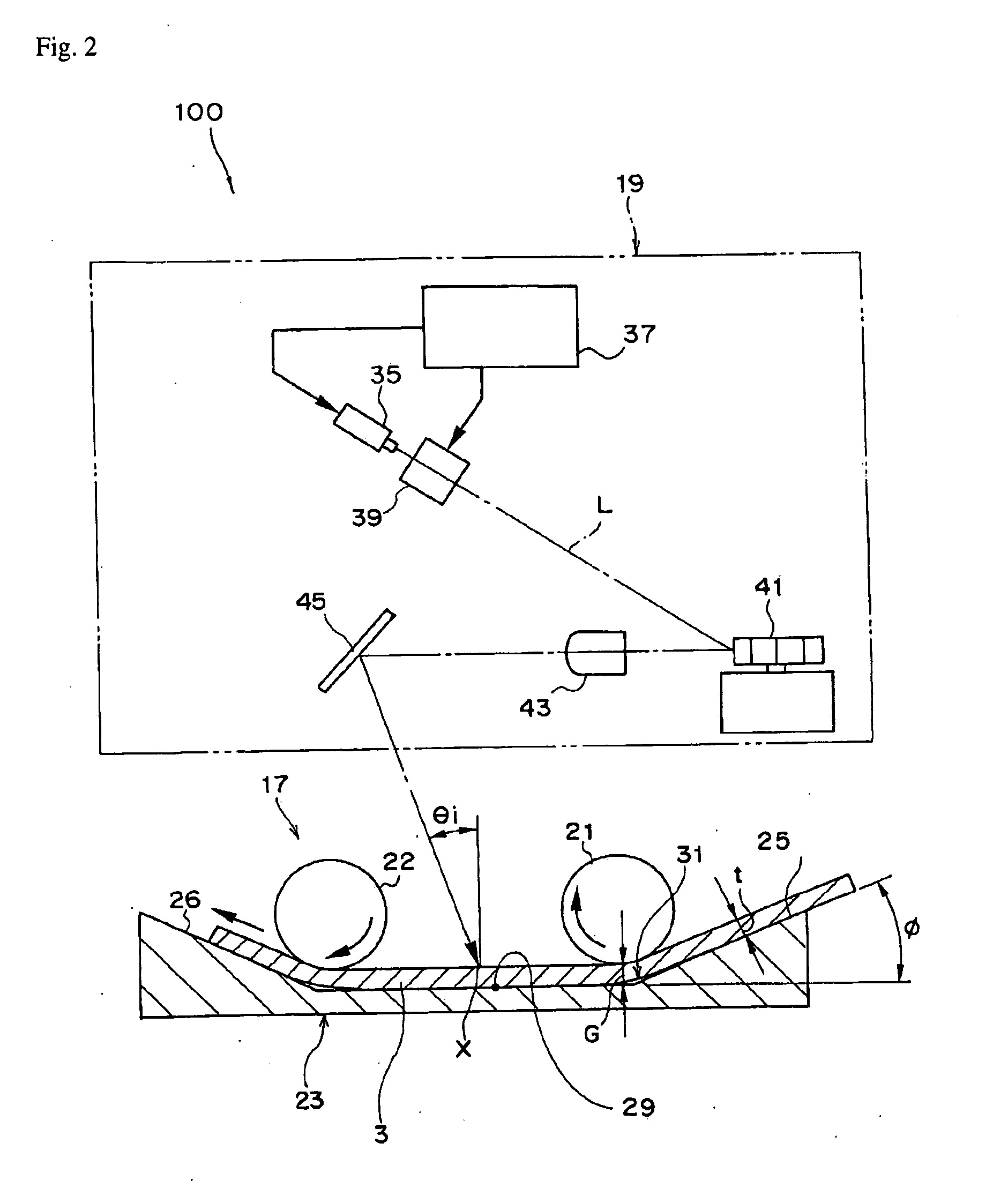Photothermographic material and method of forming images
a photothermographic material and image technology, applied in the field of photothermographic materials and a method of forming images, can solve the problems of not being able to achieve the reciprocal properties of storage stability and higher sensitivity, and not being able to satisfy the output system of medical images, and achieve excellent store stability
- Summary
- Abstract
- Description
- Claims
- Application Information
AI Technical Summary
Benefits of technology
Problems solved by technology
Method used
Image
Examples
example 1
Preparation of PET Support
1) Film Preparation
[0625] Using terephthalic acid and ethylene glycol, PET at an intrinsic viscosity: IV=0.66 (measured in phenol / tetrachloroethane=6 / 4 (mass ratio) at 25° C.) was obtained in accordance with an ordinary method. After pelleting the same, it was dried at 130° C. for 4 hours, melted at 300° C. and then extruded from a T-die after melting, and quenched to prepare a not-stretched film.
[0626] It was stretched longitudinally by 3.3 times using rolls of different circumferential speeds and then stretched laterally by 4.5 times by a tenter. The temperature in this process was 110° C. and 130° C., respectively. Then, after heat setting at 240° C. for 20 sec, it was relaxed by 4% in the lateral direction. Then, after slitting the chuck portion of the tenter, both ends were applied with knurling, and taken up at 4 kg / cm2 to obtain a roll of 175 μm thickness.
2) Surface Corona Treatment
[0627] The film was treated by using a solid state corona dis...
example 2
Preparation of Organic Silver Salt Dispersions B to C
[0703] Organic silver salt dispersions B to C of different silver behenate contents were prepared in the same manner as in the preparation for the organic silver salt dispersion A in Example 1 except for changing the ratio of recrystallized behenic acid A and recrystallized stearic acid.
Preparation of Reducing Agent-2 Dispersion
[0704] 4 g hydroxyl propyl cellulose and 86 g of water were added to 10 g of the reducing agent-2 and stirred sufficiently to form a slurry which was left for 10 hours. Then, 168 g of zirconia beads of an average diameter of 0.5 mm were provided and charged together with the slurry in a vessel and dispersed by the same dispersing machine as used for the preparation of the fine crystal dispersion of the organic silver salt for 10 hours to obtain a solid fine particle liquid dispersion. The average grain size for 70% by mass was 1.0 μm or less.
Preparation of Image Forming Coating Solutions-2 to 4
[070...
example 3
[0709] An intermediate layer A coating solutions was prepared by further adding 100 g of a crosslinking agent-1 shown in Table 4 (EPOCROS K-2020E (Nippon Shokubai Co.)) in the intermediate layer A coating solution-2 in Example 1. A photothermographic material 301 was manufactured by the same method as that for the photothermographic material-2 in Example 1 except for using this intermediate layer coating solution. Further, evaluation was conducted by the same method as for Example 1. The results are shown in Table 4.
TABLE 4OutermostIntermediate AUnprocessed stockPhotothermographiclayerCrosslinkingIntermediate BstorabilityImagematerialBinderBinderagentBinderCondition ACondition BstorabilityRemarks2Gelatin / PVA / latex = 100 / 80noneFormula7%11%8%Inventionlatex = 100 / 34.2(M) P-8301Gelatin / PVA / latex = 100 / 80CrosslinkingFormula6% 9%6%Inventionlatex = 100 / 34.2agent-1(M) P-8
[0710] The unprocessed stock storability and image storability were further improved by the addition of the crosslinkin...
PUM
| Property | Measurement | Unit |
|---|---|---|
| speed | aaaaa | aaaaa |
| temperature | aaaaa | aaaaa |
| Tg | aaaaa | aaaaa |
Abstract
Description
Claims
Application Information
 Login to View More
Login to View More - R&D
- Intellectual Property
- Life Sciences
- Materials
- Tech Scout
- Unparalleled Data Quality
- Higher Quality Content
- 60% Fewer Hallucinations
Browse by: Latest US Patents, China's latest patents, Technical Efficacy Thesaurus, Application Domain, Technology Topic, Popular Technical Reports.
© 2025 PatSnap. All rights reserved.Legal|Privacy policy|Modern Slavery Act Transparency Statement|Sitemap|About US| Contact US: help@patsnap.com



